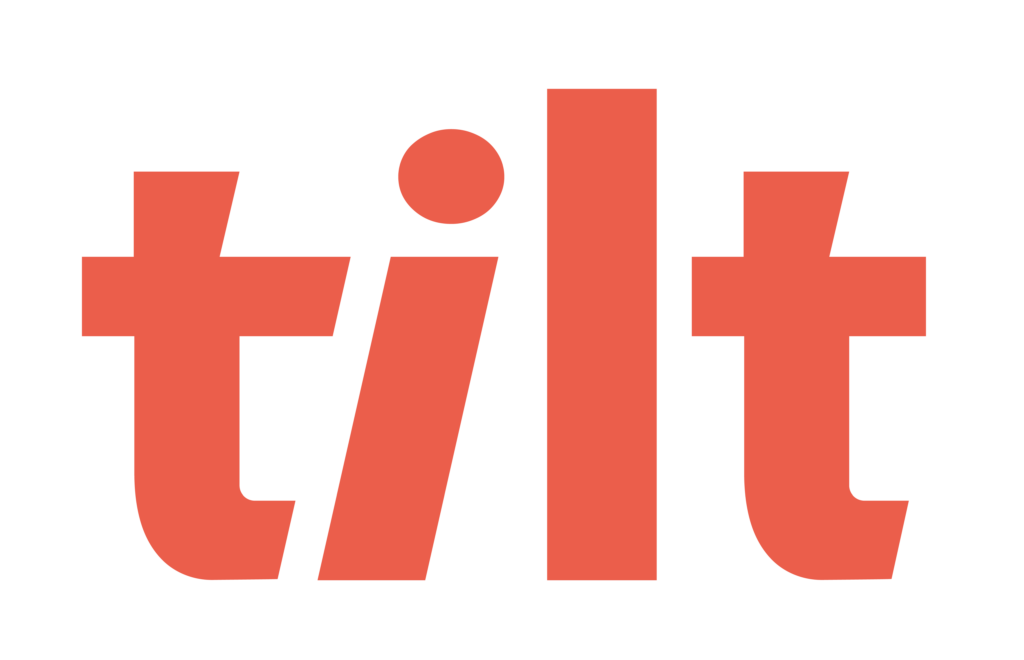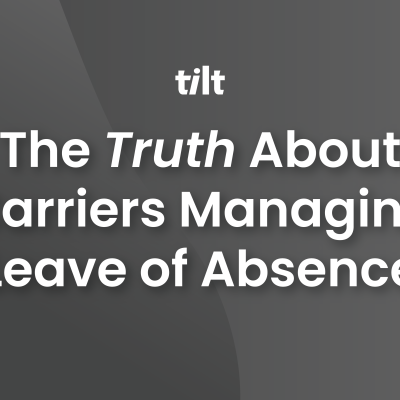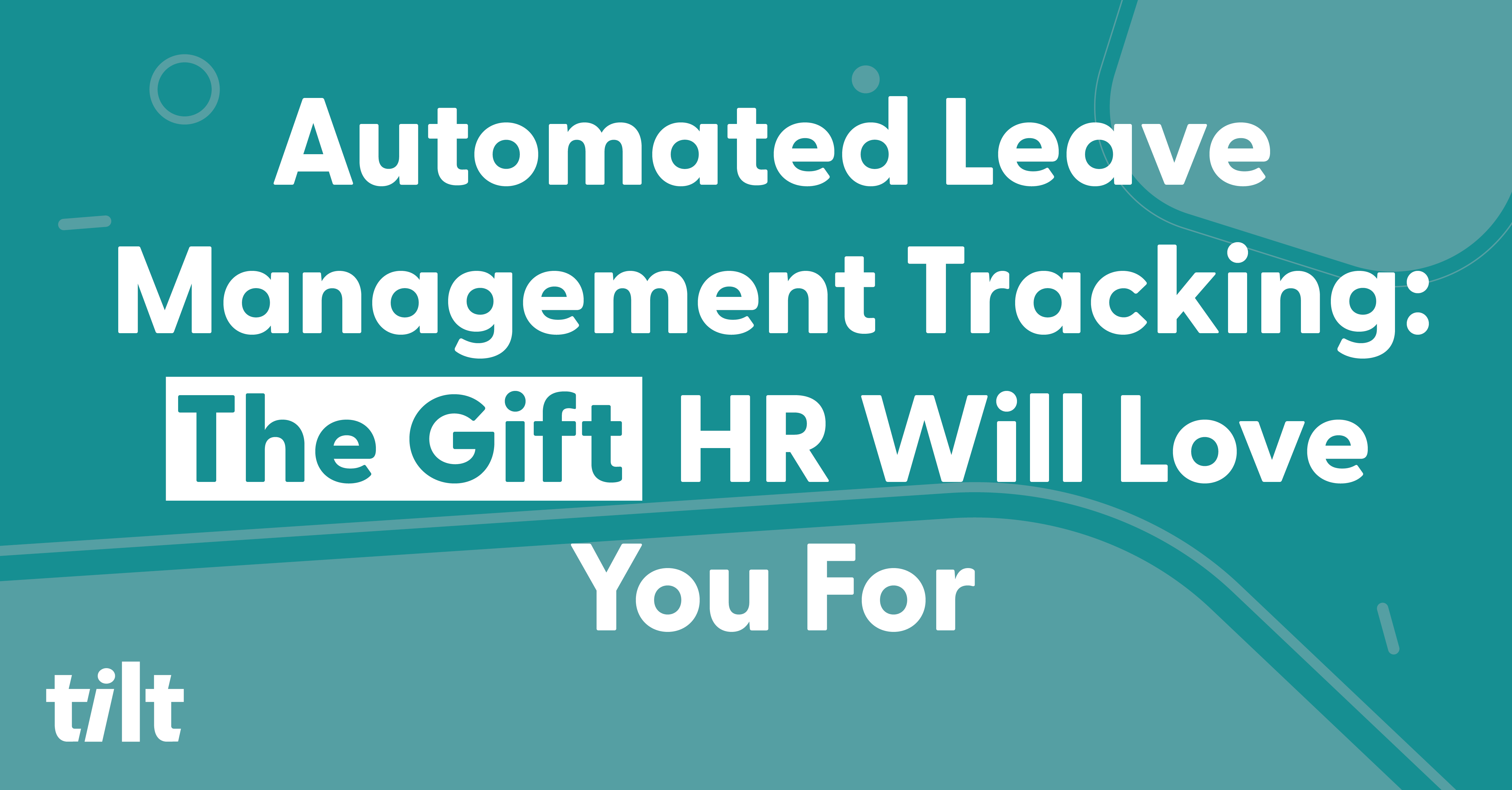To all the Short-Term Disability (STD) carriers out there, we’ve got nothing but love for you. You provide an invaluable function to our society by delivering financial protection to individuals unable to work for a variety of very human reasons.
In fact, there’s a good chance if you’re reading this you or someone you know has been able to make ends meet thanks to an STD provider.
Yet for the same reasons you wouldn’t rely on a police officer to put out a house fire, or an accountant to refinance your mortgage, there are some painful truths that People Ops professionals and the employees they’re trying to support face when relying on carriers to manage a leave of absence (LOA).
“Often a leave of absence is supplemented from a pay capacity through a short-term disability policy,” said Tilt Founder & CEO Jen Henderson in a recent episode of From the Ground Up. “So an organization will tell an individual who needs a leave of absence to, ‘Talk to the insurance company. Reach out to them.’”
If your HR or People Ops client is looking for a solution for managing leaves of absence, it’s important to know why even if STD carriers may be great at their primary function, they fall well short of providing the effective and empathetic support required for the complex world of LOAs.
1. STD Carriers Lack System Integration Necessary for Leave Management
A single leave of absence has countless moving parts that must work in harmony in order for HR teams to effectively manage the employee journey from start to finish.
STD Carriers struggle to achieve this harmony because often they’re operating completely independently from other HR systems. This leads to disjointed and siloed information, data blind spots, and vast communication gaps.
The stress and strain this puts on People Ops professionals is tremendous as they try to bridge these gaps across their HRIS system, leave tracking spreadsheets, payroll database, current leave law information, workforce planning roadmaps, and the employees themselves looking for guidance.
With leave of absence management, having a single source of truth for all things leave is paramount to success. With the right solution in place, you can eliminate system gaps in data accuracy, communication breakdowns, and coordination between disability claims and other aspects of leave management.
2. A Carrier’s Lack of Leave Expertise Creates HR Pain Points
Despite their best efforts, STD carriers typically focus solely on the financial aspect of disability claims, overlooking the broader needs of employees during leaves of absence.
“Carriers are singularly focused on the part of the leave that’s impacted by the STD policy,” adds Jen. “The problem with that scenario is that there are a lot of other moving pieces with a leave of absence. There’s your company policy, and in the 13 states that have passed leave legislation there’s a state policy, so only having the outreach to that one provider is an incomplete solution and frustrating from a user experience standpoint.”
With over 400 (and counting) permutations of leave laws, an ever-expanding list of company policies aimed at improving work-life balance and human support, employees spread all over the country, and leave requests rising, carriers simply aren’t equipped with the expertise or system sophistication required to manage much in the way of LOA support beyond the STD policy.
A carrier can’t effectively navigate the complex leave law landscape in the modern working world, but HR leaders are required to adhere to legislative policies and procedures all the same. This creates a painful scenario where a carrier is being counted on to provide support, but the burden of actually providing it still falls on the shoulders of overworked professionals in HR.
Modern leave management requires a holistic approach that addresses the financial support of employee benefits regardless of whether it’s from an employer policy, an STD claim, or a state benefit.
The right leave solution provides a level of expertise in all things leave and the technology in place to effectively administer every leave permutation. Only then will HR and People Ops teams have the confidence to know that their employees are being effectively and compliantly guided through the leave journey with empathy and ease.
3. Carriers Struggle to Keep HR Teams Compliant With Leaves of Absence
Given the ever-evolving nature of leave laws and regulations across the country, it’s no surprise that STD carriers may struggle to keep pace with the evolving landscape, leading to potentially painful compliance exposure for employers.
On its own, that’s enough to call into question the effectiveness of carriers trying to manage leaves of absence, but the compliance concerns People Ops leaders experience extend well beyond adhering to complex regulations.
Leaves of absence also require employers to safely and securely maintain sensitive employee information and personal documents. Without providing a single source of truth for leave data, HR teams often find that they’re stuck fending for themselves when it comes to facilitating the completion of important documents and protecting employee information from being shared with the wrong people or lost in the administrative shuffle.
Relying on manual processes and data entry across multiple systems is another major frustration and compliance risk. The lack of data accuracy and the potential for employees to miss important deadlines can cause a compliance ripple effect that organizations may not recover from.
Then there are employee managers. By leaving managers in the dark and without educating them on what a particular leave entails, what protections the employee may have, and what they legally can and cannot say, carriers are protecting organizations from themselves and potential discrimination claims that may pop up.
If compliance wasn’t important enough, managers also hold the keys to employee psychological safety, confidence in their return, and feeling cared for. All roads lead back to managers and carriers simply leave employers driving blind..
HR and People Ops leaders are learning the hard way that the compliance risks associated with carriers managing employees’ leaves of absence are creating unacceptable vulnerabilities for their organizations.
An effective approach to leave management should mitigate the very real and variable risks associated with leaves. All of them.
4. STD Carrier Communication Limitations For LOA Support
Imagine if you will you’re a People Ops manager trying to successfully facilitate a leave of absence and a question arises from an employee.
A question you don’t have the answer to.
A question you’ve Googled and still aren’t confident you’re correct about.
A question that your employee needs an answer to, and quickly.
Depending on a carrier to communicate with your employee is a bit of a pipe dream.
“(Carriers are) an independent 3rd party,” adds Jen. “A 1-800 number. It’s never the same person twice.”
Clear and timely communication is essential for ensuring that everyone involved understands their roles and responsibilities and can collaborate efficiently for every leave scenario for every leave of absence.
Given an STD carrier’s area of expertise, they often face challenges in communicating effectively with employers, healthcare providers, and employees throughout the leave management process.
Beyond that, employers and employees alike are faced with a cold experience in a very human time of need. Instead of dealing with a human who knows every in and out of the employee’s leave history, they’re instead navigating robo-operators trying to find answers to questions they have questionable confidence in.
5. Carriers Aren’t Equipped With Adequate Technology to Manage Modern LOAs
As a Benefits Broker recently told us, when it pertains to leave of absence support most carrier’s technology is, “So broken they aren’t even worth fixing.”
This might explain why more employers are turning away from carrier support and seeking relief from their LOA woes elsewhere. What People Ops pros want is sophisticated and simple-to-use technology with built-in automation and integration, leave law expertise to instill compliance confidence, and 1-1 human support for every employee leave journey.
The truth is that many STD carriers still rely on outdated systems and manual processes for claims management, resulting in inefficiencies, compliance risks, and potentially consequential delays.
Further, many employers are stuck bridging the gap by manually tracking leaves on spreadsheets which creates numerous points of frustration.
“The spreadsheet problems are self-explanatory,” Jen says. “They don’t scale well and they’re prone to human error. With the complexity of leave that has risen in the last 5 years, spreadsheets can’t handle the “if/then” scenarios that arise in a leave through cells and formulas.”
Modern leave management demands advanced technology solutions that streamline processes and provide real-time insights into every leave within an organization. It should automate what once was manual, and it should eliminate inefficiencies in the LOA process while maintaining compliance.
How A Modern Leave Management Solution Eases LOA Pain
Born from the pain that antiquated leave management solutions have caused for years, modern technology is blazing a trail of easy, empathetically supported leave management.
By using a leave management solution like Tilt, HR and People Ops leaders are reaping the benefits that come with system integration, leave law expertise, compliance confidence, dedicated human support, and technology that works efficiently and effectively for every leave in every state.
Tilt’s HR Dashboard gives employers a window into every leave of absence across the organization.
Tilt integrates data directly from the HRIS system and continually updates leave information for accurate leave data without putting the burden on HR. All leave information under one digital roof.
As for expertise, Tilt’s in-house team of leave law experts stay up to date on every leave law and incorporates it into our tech. In fact, we develop a quarterly Leave Law Report so HR and People Ops professionals can be in the know (even if Tilt handles it all for them).
Tilt also provides a Manager Dashboard to ensure that not only are leaves being administered in accordance with the latest regulations, but that managers are kept in the loop and educated on the do’s and don’ts of leave behavior.
Having all leave information, including payroll, in one easy-to-use platform is exactly the kind of administrative pain relief People Ops teams have been begging for, but Tilt hasn’t forgotten about communication.
Tilt can communicate directly with carriers, and will help employees navigate their often tricky technology. Tilt also provides every employee with their own dedicated Leave Success Manager who is there to provide their empathy, guidance and leave expertise throughout the employee leave journey.
Tilt is the one leave management solution that bridges the provides a sophisticated and secure technology and accompanies that with helpful humans dedicated to effective leave support.
Carriers may be amazing at what they do, but they’re simply out of their depth with the nuance and complexity surrounding leave of absence management.
Relying on leave experts like Tilt can turn HR pains into stress-free LOA relief.
About Tilt
Tilt is leading the charge in all things leave of absence management through easy-to-use tech and human touch. Since 2017, our proprietary platform and Empathy Warriors have been helping customers make leave not suck by eliminating administrative burdens, keeping companies compliant, and providing a truly positive and supportive leave of absence experience for their people.







